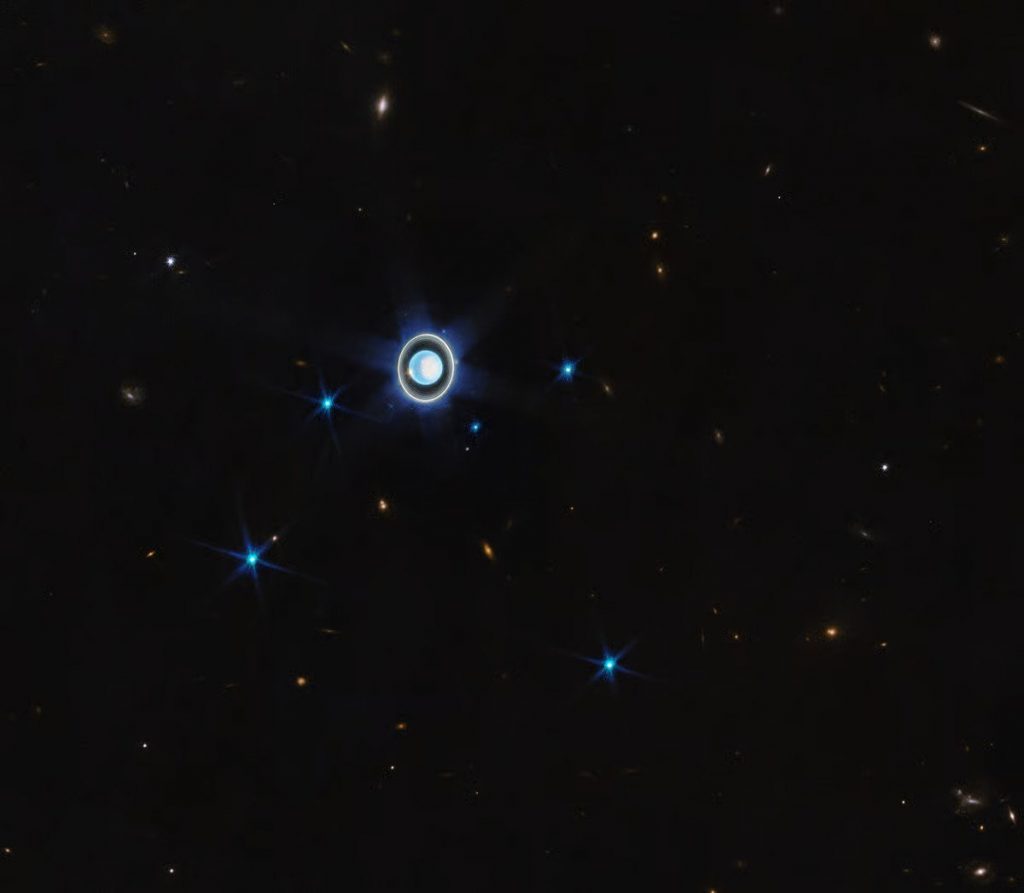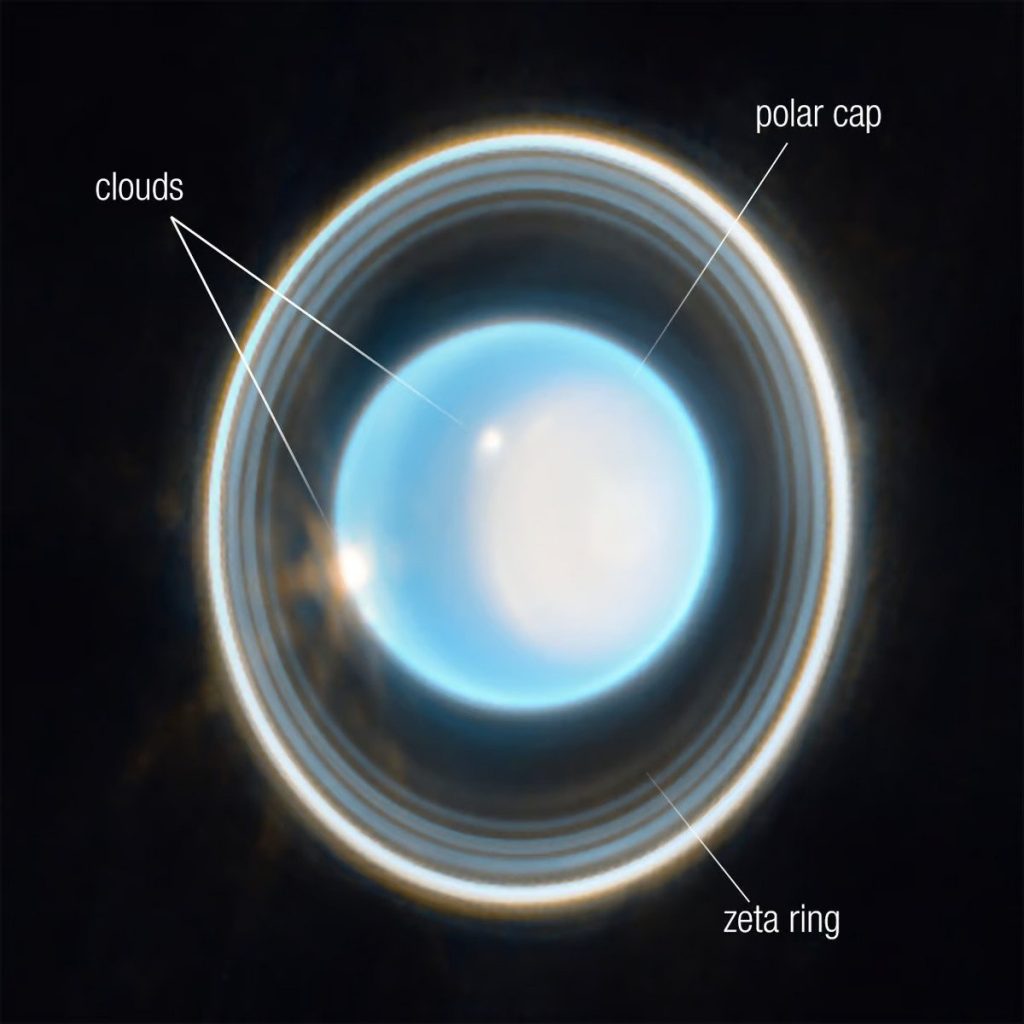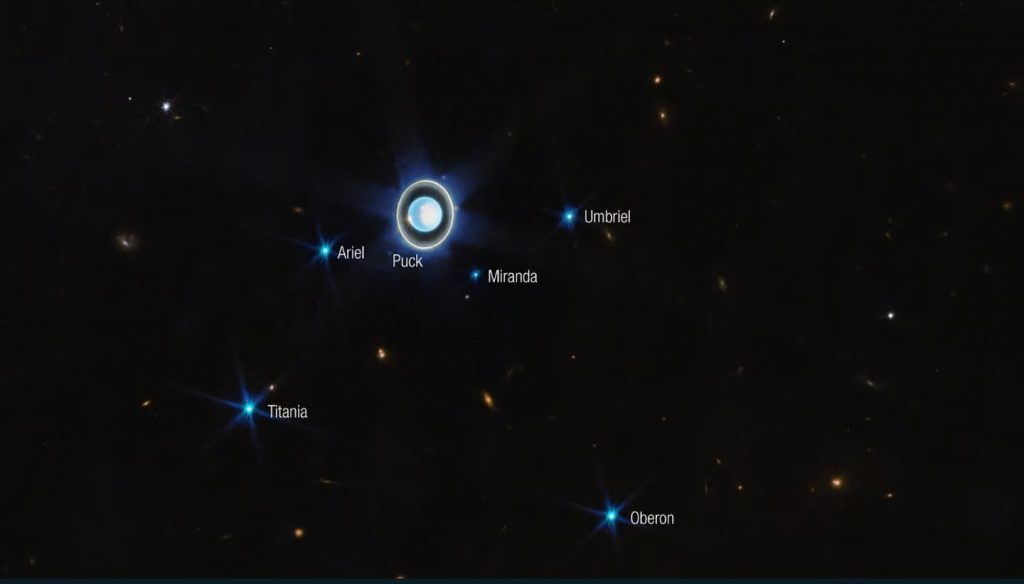The ice giant planet Uranus has been imaged in new spectacular infrared images captured by the James Webb Space Telescope (JWST). These images reveal new details of the planet’s north polar region, its ring system, and multiple moons.
The JWST’s Near-Infrared Camera (NIRCam) took the pictures in the 1.4 and 3.0-micron bands of the infrared light spectrum, adding to the knowledge base of the outer solar system’s planets.

In the past half-century, robotic space probes have changed our perceptions of the outer solar system. These probes have provided us with vast collections of data and stunning images of planets that were previously little more than blurry objects.
However, the technology used in these probes was primitive compared to today’s standards, and some planets were only seen during brief flybys, providing us with snapshots.

Uranus, the seventh planet, has only been visited once by the Voyager 2 probe during a flyby as it left the solar system. Voyager’s visit revealed the composition of Uranus’s upper atmosphere and the first photographic evidence of the planet’s rings, but the images made it look like a featureless ball.
The new images from JWST’s NIRCam reveal Uranus’s unique orientation, where its axis of rotation sits almost at right angles to the plane of its orbit. As it revolves around the Sun every 84 years, one pole is kept in near-total darkness while the other is bathed in unending sunlight for 42 years.
Scientists are greatly interested in the extreme weather produced by the contrast in Uranus’s northern hemisphere as it moves from spring to summer in 2028. This weather can provide new insights into how Earth’s climate works.

The new images of the planet taken by the James Webb Space Telescope reveal a bright area known as the polar cap, which appears in the summer and disappears in autumn in either hemisphere. The reason behind this occurrence is currently unknown.
The images also reveal a brighter spot at the center of the cap, which hasn’t been previously seen. Additionally, a bright cloud and extended features at the edge of the cap and a second bright cloud outside the cap are visible, which may be a storm or connected to one in some way.
The images captured by the telescope also reveal eleven of Uranus’s 13 known rings and a number of the planet’s 27 known moons.


